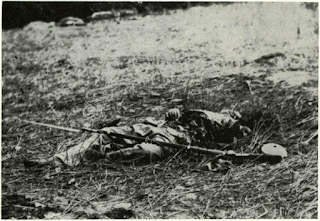Dr. Paul Steiner, writing in Military Medicine, May,
Webb noted to Wadsworth that in his experience a case
“The bullet passed through the corner of my eye and
His colleague General Wadsworth fared less easily.
“I lifted his eyelids, but there was ‘no speculation in those eyes,’ ” Adams relates. “I felt his pulse, which
“The surgeons came Saurday night and examined
Webb noted to Wadsworth that in his experience a case
“The bullet passed through the corner of my eye and
His colleague General Wadsworth fared less easily.
“I lifted his eyelids, but there was ‘no speculation in those eyes,’ ” Adams relates. “I felt his pulse, which
“The surgeons came Saurday night and examined

Comments
Post a Comment